
Enjoy the Freedom to Show Your Legs
What Is Asclera® (pronounced a skler ah)?
Asclera® (polidocanol) Injection is a prescription medicine that is used in a procedure called sclerotherapy and is administered by a healthcare provider to treat two types of veins:
Asclera® is a sclerosing agent that is injected into the vein. It works by damaging the endothelium, the cells lining the inside of blood vessels. This causes blood platelets and cellular debris to attach to the lining of the vessels; eventually, cellular debris and platelets cause the blood vessel to clot. Over time, the clotted vein will be replaced with tissue.
Patient Satisfaction1
On average, 87% of patients were satisfied or very satisfied with their Asclera® treatment Patients were significantly more satisfied with Asclera® than with either sodium tetradecyl sulfate (STS) or placebo (p<0.0001)
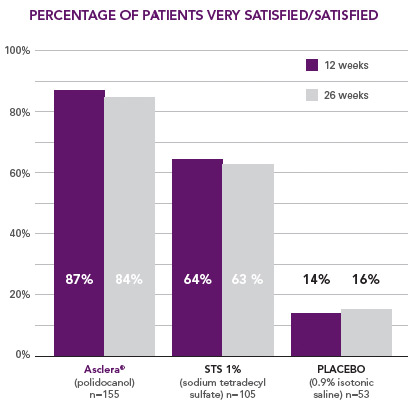
1 At 12 and 26 weeks after last injection patients received the digital images of their treatment area taken at baseline and were asked to rate their satisfaction with their treatment using a verbal rating scale, where 1 = very unsatisfied, 2 = somewhat unsatisfied, 3 = slightly satisfied, 4 = satisfied, and 5 = very satisfied.
How long is each Asclera® session?
A typical sclerotherapy session lasts 15 to 45 minutes. One injection is usually administered per inch with multiple injections per session. Following treatment compression stockings or support hose should be worn continuously for 2-3 days and for 2-3 weeks during the day time. Repeat sessions may be necessary. If additional treatment sessions are required they are usually reparated by 1-2 weeks.
What should I expect after being treated with Asclera®? Maintain graduated compression
2-3 days after treatment of spider veins
5-7 days after treatment of reticular veins
For extensive varicosities, longer compression treatment is recommended
Post-treatment compression is necessary to reduce the risk of deep vein thrombosis.
Encourage walking
15-20 minutes immediately after treatment
Daily for a few days
What should I avoid after receiving an Asclera® Injection?
For two to three days following the treatment, avoid (if you are uncertain, please ask your healthcare provider):
Heavy exercise
Sunbathing
Long plane flights
Hot bath or sauna
Are there any possible side effects to Asclera® treatments?
Yes, they may include:
Severe allergic reactions have been reported following polidocanol use, including anaphylactic reactions, some of them fatal. Severe reactions are most frequent with use of larger volumes (> 3 mL). The dose of polidocanol should therefore be minimized. A doctor should be prepared to treat anaphylaxis appropriately.
In rare cases, formation of small "burns" or ulcers form, usually due to leakage of Asclera® into the skin. They heal in time, but may leave a scar.
Inadvertent perivascular injection of Asclera® can cause pain. If pain is severe, a local anesthetic (without adrenaline) may be injected.
You should tell your doctor about all the medicines you are taking, including:
Prescription and nonprescription medicines, vitamins and herbal products
You should not be treated with Asclera® if you:
Asclera® (polidocanol) Injection is a prescription medicine that is used in a procedure called sclerotherapy and is administered by a healthcare provider to treat two types of veins:
- Uncomplicated spider veins (very small varicose veins ≤ 1 mm in diameter)
- Uncomplicated small varicose veins (1 to 3 mm in diameter) known as reticular veins
Asclera® is a sclerosing agent that is injected into the vein. It works by damaging the endothelium, the cells lining the inside of blood vessels. This causes blood platelets and cellular debris to attach to the lining of the vessels; eventually, cellular debris and platelets cause the blood vessel to clot. Over time, the clotted vein will be replaced with tissue.
Patient Satisfaction1
On average, 87% of patients were satisfied or very satisfied with their Asclera® treatment Patients were significantly more satisfied with Asclera® than with either sodium tetradecyl sulfate (STS) or placebo (p<0.0001)

1 At 12 and 26 weeks after last injection patients received the digital images of their treatment area taken at baseline and were asked to rate their satisfaction with their treatment using a verbal rating scale, where 1 = very unsatisfied, 2 = somewhat unsatisfied, 3 = slightly satisfied, 4 = satisfied, and 5 = very satisfied.
How long is each Asclera® session?
A typical sclerotherapy session lasts 15 to 45 minutes. One injection is usually administered per inch with multiple injections per session. Following treatment compression stockings or support hose should be worn continuously for 2-3 days and for 2-3 weeks during the day time. Repeat sessions may be necessary. If additional treatment sessions are required they are usually reparated by 1-2 weeks.
What should I expect after being treated with Asclera®? Maintain graduated compression
2-3 days after treatment of spider veins
5-7 days after treatment of reticular veins
For extensive varicosities, longer compression treatment is recommended
Post-treatment compression is necessary to reduce the risk of deep vein thrombosis.
Encourage walking
15-20 minutes immediately after treatment
Daily for a few days
What should I avoid after receiving an Asclera® Injection?
For two to three days following the treatment, avoid (if you are uncertain, please ask your healthcare provider):
Heavy exercise
Sunbathing
Long plane flights
Hot bath or sauna
Are there any possible side effects to Asclera® treatments?
Yes, they may include:
Severe allergic reactions have been reported following polidocanol use, including anaphylactic reactions, some of them fatal. Severe reactions are most frequent with use of larger volumes (> 3 mL). The dose of polidocanol should therefore be minimized. A doctor should be prepared to treat anaphylaxis appropriately.
In rare cases, formation of small "burns" or ulcers form, usually due to leakage of Asclera® into the skin. They heal in time, but may leave a scar.
Inadvertent perivascular injection of Asclera® can cause pain. If pain is severe, a local anesthetic (without adrenaline) may be injected.
You should tell your doctor about all the medicines you are taking, including:
Prescription and nonprescription medicines, vitamins and herbal products
You should not be treated with Asclera® if you:
- Have a known allergy to polidocanol
- Have an acute vein or blood clotting (thromboembolic) disease
- Are pregnant or nursing
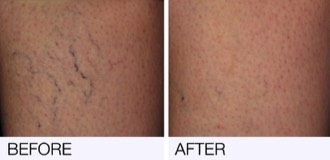
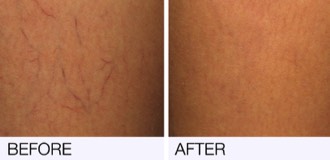
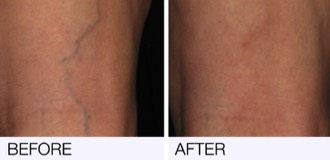
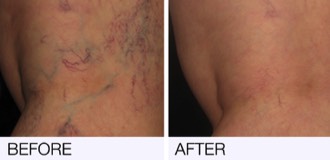
What is sclerotherapy?
Sclerotherapy is a minimally invasive procedure done by your healthcare provider to treat uncomplicated spider veins and uncomplicated reticular veins. The treatment involves the injection of a solution into the affected veins.
What are varicose veins?
Varicose veins are large blue, dark purple veins. They protrude from the skin and many times they have a cord-like appearance and may twist or bulge. Varicose veins are found most frequently on the legs.
What are spider veins?
Spider veins are very small and very fine red or blue veins. They are closer to the surface of the skin than varicose veins. They can look like a thin red line, tree branches or spider webs. Spider veins can be found on the legs and face and may cover a small or large area.
What are reticular veins?
Reticular veins can also be known as feeder veins. They are the blue and green veins beneath the surface of the skin.
Reticular veins enlarge because of increased pressure in the vein. They can be caused by heredity. You may have reticular veins alone but you may also have spider veins at the same time.
What causes spider and reticular veins?
Spider and reticular veins can be caused by many factors.
Other possible causes for varicose veins are race, posture, occupation, hormones such as estrogen and progesterone, primary valvular incompetence, and incompetent perforating veins.
Sclerotherapy is a minimally invasive procedure done by your healthcare provider to treat uncomplicated spider veins and uncomplicated reticular veins. The treatment involves the injection of a solution into the affected veins.
What are varicose veins?
Varicose veins are large blue, dark purple veins. They protrude from the skin and many times they have a cord-like appearance and may twist or bulge. Varicose veins are found most frequently on the legs.
What are spider veins?
Spider veins are very small and very fine red or blue veins. They are closer to the surface of the skin than varicose veins. They can look like a thin red line, tree branches or spider webs. Spider veins can be found on the legs and face and may cover a small or large area.
What are reticular veins?
Reticular veins can also be known as feeder veins. They are the blue and green veins beneath the surface of the skin.
Reticular veins enlarge because of increased pressure in the vein. They can be caused by heredity. You may have reticular veins alone but you may also have spider veins at the same time.
What causes spider and reticular veins?
Spider and reticular veins can be caused by many factors.
- Heredity. Having a family member with prominent veins may increase the risk of you developing them. Approximately half of the people who get varicose veins have a family history of them.
- Age. The normal wear and tear of aging may cause valves in the veins to weaken and not work as well.
- Gender. Women are two to three times more likely to develop varicose veins than men. Up to half of American women have varicose veins. Changes in hormones due to puberty, pregnancy, menopause, or taking birth control pills may increase a woman's risk of developing varicose veins.
- Pregnancy. During pregnancy, the growth of the fetus increases the pressure on the veins in the legs. Varicose veins that occur during pregnancy usually improve within 3 to 12 months following delivery.
- Overweight and obesity. Having extra weight on the body can put additional pressure on the veins.
- Prolonged standing or sitting. This is particularly true with legs bent or crossed. When standing or sitting with legs bent or crossed, the veins have to work harder to pump the blood up to the heart.
Other possible causes for varicose veins are race, posture, occupation, hormones such as estrogen and progesterone, primary valvular incompetence, and incompetent perforating veins.

The Art of Vein Treatment
How does VeinGogh work?
The VeinGogh Ohmic Thermolysis System generates a tiny, regulated, high frequency current delivered to the vessel via a hair-thin probe. A "microburst" of energy selectively heats the vein, coagulating the blood and collapsing the vessel wall, which is quickly absorbed into the body. All this is accomplished without affecting the outer layers of the skin resulting in a quick return to normal daily activities.
Is there any downtime?
The precise nature of the VeinGogh treatment limits the risk of over-treating, so there is little to no trauma to the skin. Following treatment, there will be some mild redness that usually lasts about 2-3 hours.
Does the treatment hurt?
On a pain scale of 1-10, with some laser treatments being an 8 - 9, VeinGogh is a 2-3. Since the procedure uses a hair-thin probe inserted into the vessel, there can be a slight "pinch." Patients report it feels similar to a hair being removed.
How long is a typical treatment?
Depending mainly upon the size of the area, treatments can range from about a minute for minor lesions on the nose, and up to 20-25 minutes for a more extensive condition covering much of the face or legs.
How many treatments are needed?
Generally only one treatment is necessary. However, depending on the specific condition, a follow-up treatment may be necessary.
Will the veins come back?
Veins that have been properly treated will not return. However, new veins may develop over time and require retreatment. Follow-up
visits are recommended for "touch-ups."
Does VeinGogh only work on veins?
No! VeinGogh can also be used to eliminate cherry angiomas, small hemangiomas, skin tags, spider nevi, and even the redness of rosacea.
When will I see results?
Immediately. You will see continuous improvement over several weeks as the treated vessels are reabsorbed.
On what size vessel does VeinGogh work best?
VeinGogh works best on spider veins up to 0.3mm. VeinGogh is not designed to treat feeders or larger vessels deep beneath the surface.To effectively treat leg veins,VeinGogh should be used in conjunction with sclerotherapy.
The VeinGogh Ohmic Thermolysis System generates a tiny, regulated, high frequency current delivered to the vessel via a hair-thin probe. A "microburst" of energy selectively heats the vein, coagulating the blood and collapsing the vessel wall, which is quickly absorbed into the body. All this is accomplished without affecting the outer layers of the skin resulting in a quick return to normal daily activities.
Is there any downtime?
The precise nature of the VeinGogh treatment limits the risk of over-treating, so there is little to no trauma to the skin. Following treatment, there will be some mild redness that usually lasts about 2-3 hours.
Does the treatment hurt?
On a pain scale of 1-10, with some laser treatments being an 8 - 9, VeinGogh is a 2-3. Since the procedure uses a hair-thin probe inserted into the vessel, there can be a slight "pinch." Patients report it feels similar to a hair being removed.
How long is a typical treatment?
Depending mainly upon the size of the area, treatments can range from about a minute for minor lesions on the nose, and up to 20-25 minutes for a more extensive condition covering much of the face or legs.
How many treatments are needed?
Generally only one treatment is necessary. However, depending on the specific condition, a follow-up treatment may be necessary.
Will the veins come back?
Veins that have been properly treated will not return. However, new veins may develop over time and require retreatment. Follow-up
visits are recommended for "touch-ups."
Does VeinGogh only work on veins?
No! VeinGogh can also be used to eliminate cherry angiomas, small hemangiomas, skin tags, spider nevi, and even the redness of rosacea.
When will I see results?
Immediately. You will see continuous improvement over several weeks as the treated vessels are reabsorbed.
On what size vessel does VeinGogh work best?
VeinGogh works best on spider veins up to 0.3mm. VeinGogh is not designed to treat feeders or larger vessels deep beneath the surface.To effectively treat leg veins,VeinGogh should be used in conjunction with sclerotherapy.
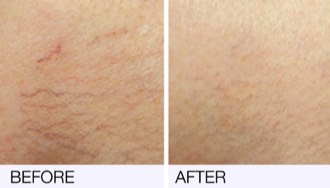
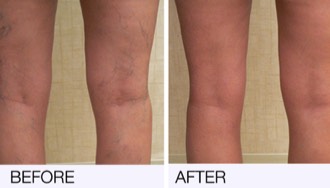
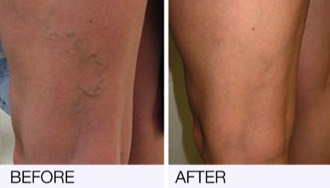
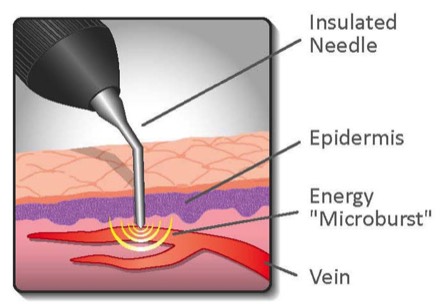
Contact Us @ 787-772-0707 • 787-567-3377
305 Ave FD Roosevelt San Juan PR
Were to Find Us
305 Ave FD Roosevelt
San Juan, PR 00918
305 Ave FD Roosevelt
San Juan, PR 00918
(Close to Plaza las Americas)
Free Parking Available
Free Parking Available
Contact Information
Phone:
787-772-0707
787-567-3377
Email:
info@vipbotox.com
Get Social with Us
Follow Us on Facebook @:
www.facebook.com/vipbotox
Follow Us on Instagram @:
www.instagram.com/vipbotoxpr
Phone:
787-772-0707
787-567-3377
Email:
info@vipbotox.com
Get Social with Us
Follow Us on Facebook @:
www.facebook.com/vipbotox
Follow Us on Instagram @:
www.instagram.com/vipbotoxpr
Office Hours
Our practice is open for appointments and consultations during the following hours:
Monday thru Friday 9am to 4pm
For best service please make an appointment by calling 787-772-0707 • 787-567-3377 or click here to make an appointment online. No wait time guaranteed with an appointment!
Initial consult has a $20 record fee.
Our practice is open for appointments and consultations during the following hours:
Monday thru Friday 9am to 4pm
For best service please make an appointment by calling 787-772-0707 • 787-567-3377 or click here to make an appointment online. No wait time guaranteed with an appointment!
Initial consult has a $20 record fee.


